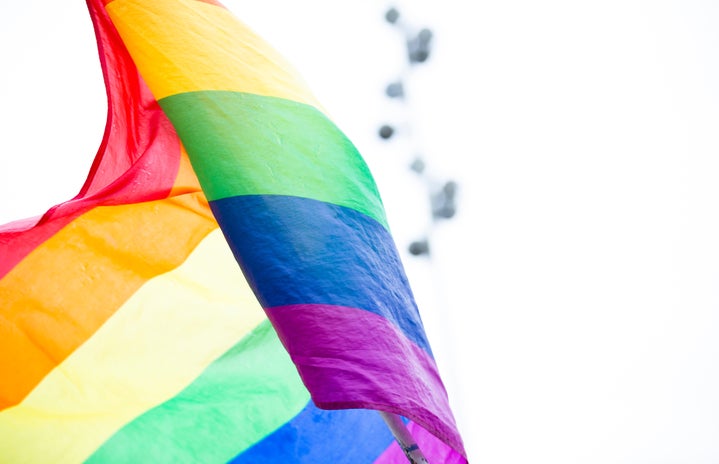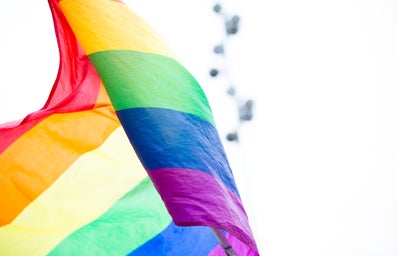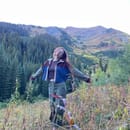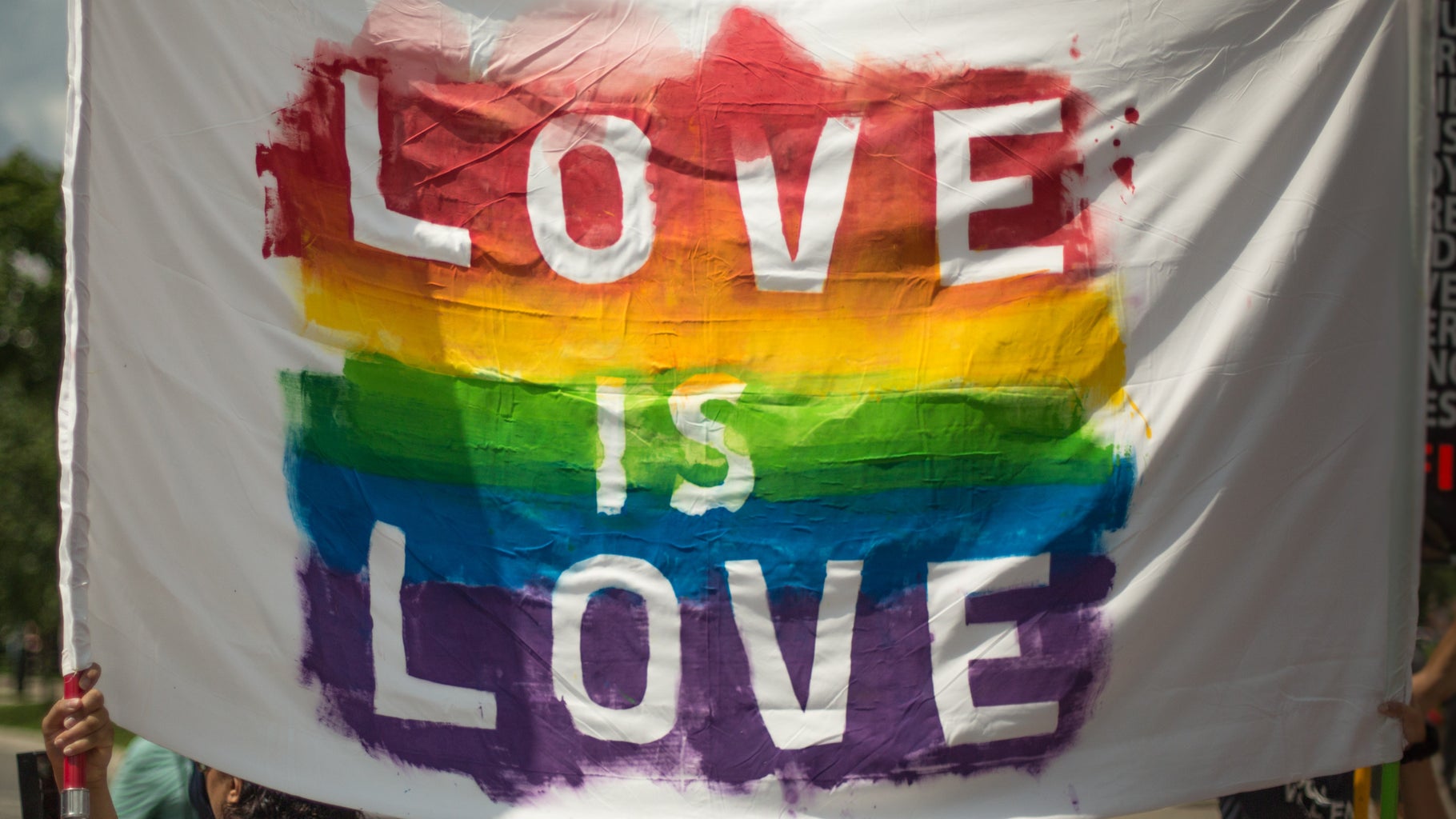Queer representation in film and the media has a long and complicated history. Queer people have been present in film since it first began, but these depictions were often inexplicit or offensive. In Hollywood, the Hays Code censored film for decades, including the banning of representing any kind of homosexuality or queerness on the screen.
The introduction of social media and the internet has provided online spaces for queer people to connect with each other and educate non-queer people. YouTube came out in December of 2005 and gained popularity almost immediately. The first coming-out video was posted on YouTube in 2006. From there, the number of coming-out videos posted on YouTube increased drastically every year.
When Georgia Bridgers started her YouTube channel in 2016, she didn’t notice a lot of queer representation that she identified with.
“There wasn’t a lot of femme bisexual or lesbian women in the media,” Bridgers said.
“Of course, there was Shay Mitchell playing Emily in ‘Pretty Little Liars’ and Heather Morris and Naya Rivera, as Heather and Santana on ‘Glee’, and then, of course, a couple YouTubers here and there but I was like yes, that is a good amount of representation. But that wasn’t enough for me to be like, I see myself as these people.”
Bridgers identifies as bisexual. The discovery of her queer identity was complicated because her sibling, Hope, came out as bisexual a couple years before, then came out as a lesbian afterward. Hope used bisexuality as a stepping stone to come out as gay and Georgia feared that people would think she used bisexuality as a stepping stone to come out as straight. A big piece of this fear was caused by the prominence of bi-erasure and bi-negativity in the media and the limited representation of bisexual women in general.
According to Kristen P. Mark, Laura M. Vowels and Amanda M. Bunting, “Bisexual individuals also often face both internalized and externalized bi-negativity, which refers to negative attitudes and beliefs about bisexuality.”
They go on to say, “Some of the beliefs toward bisexuality include a belief that bisexual individuals need to be in a relationship with both men and women, are sexually promiscuous and unable to be in a monogamous relationship, and that they are confused about their identity.”
The rhetoric around bisexual people has led to minimal representation in the media. A lot of bisexual representation that does exist is offensive and inaccurate. This had an impact on many individuals who questioned their sexuality, including Bridgers.
“I started my YouTube channel in 2016. Very pre me coming out even though that was when I was just starting to discover my sexuality. I was so terrified so I did everything I could to make sure that did not come across on any of my channels,” Bridgers said.
“Then as I continued growing up and whatnot, going through all the college experiences, I was like, okay, this isn’t something that I can hide anymore. I was like, I don’t feel authentic. This is something I want to share with the world. So did the whole coming out, the whole nine yards. And it’s funny because that is not the video that was my like, queer start on YouTube.”
Bridgers posted her coming out video on YouTube in June of 2018, almost two full years after coming out to herself. Then, in July, she posted the video that made her go viral: “Mom Asks Questions About Bisexuality.” Today, the video has over five million views.
I am one of the millions of people who discovered Bridgers through this video. She became a role model to me and helped me discover my own queer identity. When Bridgers was coming to terms with her sexuality, she didn’t have a lot of people to look to. Though she isn’t the first prominent bisexual creator on YouTube, she was part of a huge initial wave of queer representation and content.
The next big wave came with TikTok. The app was launched in 2016 and it quickly became a haven for queer and questioning youth. TikTok is known for its incredibly accurate and quick algorithm. Many people have expressed a phenomenon of their TikTok knowing that they were bisexual before they did. According to Statista, the usage of TikTok of people aged 15-25 increased by 180% during the pandemic. TikTok usage went up drastically during the pandemic, but that isn’t all. According to Briana McGeough, a University of Kansas professor who researches mental health among LGBTQ people, time in isolation gives people the opportunity to reflect and explore their identities. For many, this meant engaging with queer content and getting curious about their gender and sexuality.
Personally, I found myself reaching for TikTok at the beginning of lockdown in 2020. It was a path of connection for me and many of my peers. I also experienced a sense of self-reflection, especially around my sexuality, and eventually my gender identity at this time. After being on TikTok for only a few weeks, I found myself on “bisexual TikTok.” My For You Page was covered in videos telling me things like, “If you question if you’re straight, you’re not straight,” “Bisexual women are attracted to fictional men, women, and their boyfriend,” “Put a finger down: bisexual edition,” the list goes on and on. It is hard to say how the first video popped up, but after it did, the algorithm took over.
Before TikTok, I questioned my sexuality for years, but never reflected long enough to identify with a label other than “straight.” Labels aren’t always necessary, but they can be freeing and empowering for many. When asked about the label “bisexual,” Bridgers said,
“I am such a type-A person that when I discovered this within myself, I was like, I’m ready to label it. I want to have a name for it. And that’s just me personally, and I don’t think labels are necessary. I feel like labels mean as much as the label user or nonuser wants them to mean. It’s your life. Who am I to tell you to label yourself a specific way, and who is someone else to tell me to label myself a specific way? So for me, I felt that connection with the word bisexuality and was just okay with that. More than okay, great with that, from then on, still to this day, and that could change. You never know.”
For me, being exposed to the word and concept of bisexuality constantly on TikTok helped me to really reflect and think about my sexuality. I quickly realized that I no longer identified with being “straight.” I used that label up until this point because it was the “default” in my mind. I fell victim to compulsory heterosexuality. Compulsory heterosexuality is the phenomenon of queer people participating in heterosexual relationships and presenting themselves in a way that hides their queerness. I convinced myself I was attracted to men and only men. When my feed on TikTok became overwhelmed with queer content, I finally felt like my doubts and questions were valid.
At the time, I identified strongly with the label bisexual. I was (and still am) in a relationship with a man, but I also knew I was attracted to women. Now, I am unsure what label I identify with most. Bisexuality still resonates with me, but I have done a ton of reflecting and questioning since first landing on that label, and that’s okay. Labels are fluid and aren’t essential.
The evolution of queer media and content has had an enormous impact on Gen Z. The rise in representation in the last few years demonstrates the importance of representation of all identities.



